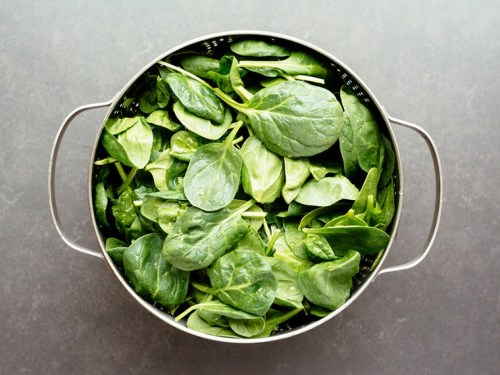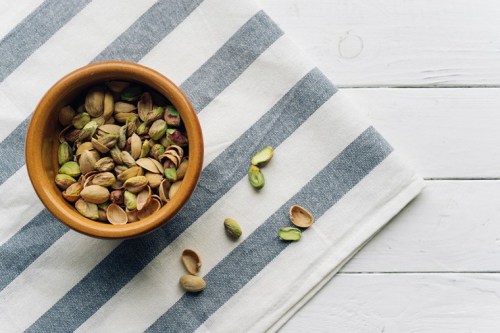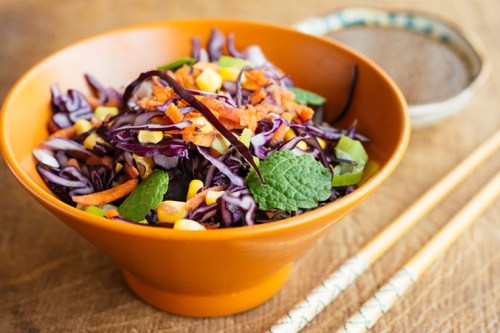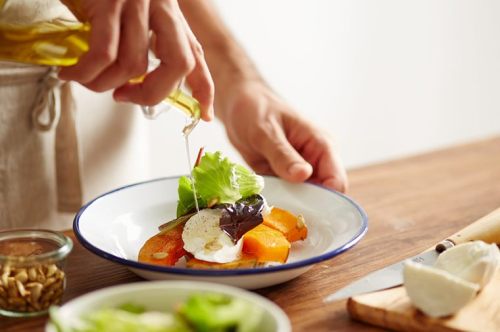Our editors independently select these products. Making a purchase through our links may earn Well+Good a commission
When you’re forking over $12 or more for a salad on your lunch hour, it pays—literally—to know how to get the most nutritional bang for your buck.
If anyone knows how to craft a super-healthy salad without spending what amounts to a monthly car payment on lunch, it’s the four healthy salad obsessives we tapped for advice here. They’re seasoned pros at identifying which toppings to load up on for the most nutrient-dense bowl—and which ones to skip.
So, should you really pay extra for avocado? And what about protein? Keep reading to find out how best to game the salad bar.
Scroll down for six tips for crafting the most nutrient-dense salad ever.

1. Be savvy with your greens
Whether you’re ordering your salad or making it at home, lettuce is almost always going to be your base. The resounding advice from pros here: Go dark. “Spinach and kale are going to give you the most nutritional value,” says Ellie Krieger, RD, author and host of Ellie’s Real Good Food. She also recommends mixing your greens so you get a wider range of healthy benefits.
Salad For President‘s Julia Sherman has traveled the world talking to creative cooks about salad, and her main takeaway is to go wild. “Foraged greens like amaranth, chickweed, and lamb’s quarters grow naturally, and once you know what they look like, you’ll start seeing them more,” she promises. Many of these free-growing greens are full of iron, calcium, and magnesium, too, which is more than enough reason to break free from your standard spinach-arugula-romaine rotation when you can.

2. Think outside the meat box with your protein
Adding chicken isn’t the only way to give your salad a protein boost. “Hummus, beans, and lentils are great alternatives,” Krieger says. Nutrition Stripped founder McKel Hill, MS, RDN, LDN, is a fan of beans and legumes as well. “They’re a great source of fiber, so they’re perfect bang-for-your-buck ingredients,” she says. Also, hummus can replace your dressing, which can hide tons of added sugar and cause bloating, eek.
“Grains like quinoa and farro are also often overlooked as salad ingredients,” adds Just Salad director of culinary development Andrea Cuellar. But they’re a great source of protein, as well as fiber. (Not to mention, whole grains have been shown to boost your metabolism.)

3. Look for veggies you don’t normally shop for
Crafting a colorful, eat-the-rainbow salad is tried-and-true advice. But Just Salad’s Cuellar offers up another tip for maximizing your salad bar picks when out on your lunch break: Choose toppings you normally skip at the grocery store. Never buy beets? Picking them as a topping is a good way to get some extra iron, vitamin C, and magnesium.
Another way to work in new ingredients is to look for seasonal salads on the menu, Cuellar adds. You know they’ll be fresh, and salad spots often put extra time into taste-testing these special recipes.

4. Go nuts with your healthy fats
Avocados are the obvious—and delicious—choice for making your salad rich in healthy fats. But if you’re tired of paying extra (or just want to shake things up) there’s a cheaper option. “Things like hemp seeds, pumpkin seeds, and chia seeds are full of nutrients,” Hill says. Sometimes a salad place doesn’t charge extra for them. Plus nuts and seeds are a much healthier way to add crunch than loading up on croutons.

5. Add in healthy slaws
Another way to get more ingredients into your meal without paying for extra? Go for the slaws (and no, not the ones dripping with mayo) or ingredient blends. “Some of the toppings at Just Salad are mixtures, like a Brussels sprouts and kale slaw or black beans and corn,” explains Cuellar. “It counts as one topping because the ingredients are combined, but you’re really getting two—and with that, more nutrients.” When you’re paying by the topping, you’ll feel like you’re pulling a fast one on the cashier.

6. Keep your dressing super simple (and low-sugar)
Why? Salad dressings often contain a crazy (crazy!) amount of sugar. When it comes to adding the finishing touch to your salad, “the simpler, the better,” says Krieger, who often just uses olive oil, lemon juice, salt, and pepper.
You can also look for one with an apple cider vinegar base. Not only will it brighten up your dish, it’s good for your gut.(Seriously, is there anything ACV can’t do?) And if your ingredients are all pulling double-duty for your body, your dressing should pull its weight, too.
If you’re bored with your salad, check out these recipes from wellness influencers. Or, switch up your Sweetgreen habit with these 10-minute lunch ideas.
Sign Up for Our Daily Newsletter
Get all the latest in wellness, trends, food, fitness, beauty, and more delivered right to your inbox.
Got it, you've been added to our email list.











